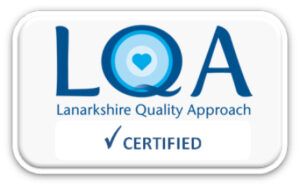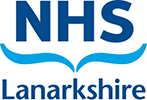Your diet prior to Laparoscopic Cholecystectomy Surgery
Information for patients
NHS Lanarkshire Dietetic Department
PIL.LAPCLY.76441.L
Preparing for Laparoscopic Cholecystectomy Surgery
It is recommended that you follow a restricted diet two weeks before having Laparoscopic Cholecystectomy surgery as this helps the liver to shrink in size making the surgery easier. During the laparoscopic or ‘keyhole’ surgery, the liver has to be moved out of the way to access the stomach lying underneath. If your liver is very bulky it is harder for the surgeon to access the stomach.
Why do I need to follow this diet?
You are expected to lose 5kg (11lbs) in weight during this time, if you do not your operation will not go ahead.
How does this diet work?
By following this diet, your body reduces its glycogen stores. Glycogen is a form of sugar stored in the liver and muscle for energy. With each ounce of glycogen, the body stores 3 to 4 ounces of water. So when you follow this diet, especially one that is low in carbohydrate, low in fat and high in protein, your body loses its glycogen stores and some water. The liver shrinks as it has less glycogen and water.
How long should I follow this diet?
This diet is only recommended for two weeks before surgery and is not to be followed afterwards.
Important information
You may find that you lose a lot of weight during this time but it will mainly be water loss. It is therefore important to stay hydrated. Please make sure that you continue to drink 2 litres or four pints throughout the day. This should be low calorie or sugar free drinks such as water, tea, coffee, bovril or low calorie squash or sugar free jelly.
You must not drink any alcohol or fizzy drinks.
For this diet to work you should stick to about 800kcals per day. Use a measuring jug and kitchen scales to make sure that you are being accurate with volumes of fluids and weights of food.
If you are diabetic you must monitor your blood sugars daily and ask your diabetic team if you have any concerns about your blood sugars or diabetic medications.
Sample Menu
Breakfast
- Small bowl (30g) of cereal (preferably high fibre and not sugar-coated) with 200mls of skimmed or semi-skimmed milk from your daily allowance
or
- One medium slice of toast (preferably high fibre) with scraping of margarine/low fat spread
Lunch
- One medium slice of bread (preferably high fibre) or two crisp breads
and
- 75g portion of lean cooked meat, chicken, turkey, fish or 25g low fat cheese or two eggs (not fried) or four tablespoons of beans
and
- green salad (lettuce, mixed leaves, cucumber, spring onions and one medium tomato or four cherry tomatoes).
Dinner
- 75g portion of lean cooked meat, chicken, turkey or fish or 50g low fat cheese or two eggs (not fried) or 100g tofu or quorn-based dish
and
- 50g boiled potato or two tablespoons cooked pasta or rice
and
- vegetables- leafy green, cauliflower, broccoli, peppers or salad (but avoid root vegetables like turnip, carrots, parsnips and also avoid peas and sweetcorn).
In addition you must have:
- One pint (568ml) of semi-skimmed milk or skimmed milk or equivalent in yogurt (one diet style yogurt (150g) = 200mls of milk)
- Two portions of 80g fruit, for example, apple, pear, banana, orange
- Water, tea, coffee or low calorie squash drinks
- Complete multivitamin/mineral supplement daily( A-Z preparation) e.g. Forceval, Sanatogen A-Z Complete, Centrum, Multibionta or supermarket/pharmacy own brand A-Z preparation.
Pub. date: April 2023
Review date: April 2025
Issue No: 05
Reference: PIL.LAPCLY.76441.L
23_05088
If you need this information in another language or format, please e-mail:




